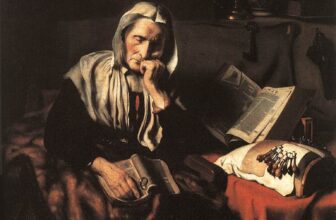
Christian Leberecht Vogel : Famous Painters of the Past
Christian Leberecht Vogel, a name that resonates through the corridors of art history, stands as a testament to the enduring power of creativity. Born on May 3, 1759, in Dresden, Germany, Vogel’s life was a narrative woven with the threads of artistic brilliance and unwavering dedication. His journey not only traversed the tumultuous landscapes of his time but also left an indelible mark on the canvas of art.
Vogel’s early years were marked by a deep affinity for the arts. Gifted with a keen eye and an innate talent for painting, he embarked on his artistic odyssey at a young age. His passion for art led him to study under the tutelage of renowned masters, imbibing their techniques while forging his unique style. Among his mentors were Johann Eleazar Zeissig, known as Schenau, and Anton Graff, both influential figures in the German art scene of the time.
The formative years of Vogel’s career were shaped by the cultural milieu of late 18th-century Europe. It was an era characterized by artistic upheaval and intellectual ferment, with the Enlightenment casting its illuminating glow across the continent. Vogel, like many of his contemporaries, found himself caught in the currents of change, navigating between tradition and innovation in pursuit of artistic excellence.
Vogel’s artistic repertoire encompassed a diverse array of genres, ranging from portraiture to landscape painting. His portraits, in particular, stand out as windows into the souls of his subjects, capturing not just their physical likeness but also the nuances of their inner selves. With each brushstroke, Vogel breathed life into his canvases, infusing them with a sense of vitality and depth that transcended mere representation.
Among his notable works, “The Artist’s Sons” stands out as a masterpiece that not only showcases his technical prowess but also encapsulates the tender bond between a father and his children.

Painted in 1790, “The Artist’s Sons” is a portrait that resonates with warmth and intimacy. Set against a backdrop of muted hues, the painting features Vogel’s two sons, Johann Carl Friedrich and Friedrich Christian Leberecht, in a quiet moment of contemplation. The elder son, Johann Carl Friedrich, stands with a book in hand, his gaze fixed thoughtfully on the viewer, while his younger brother, Friedrich Christian Leberecht, sits beside him, engrossed in his own thoughts.
What sets this portrait apart is its palpable sense of familial affection. Vogel, himself a father, imbues the painting with a sense of tenderness and love that transcends the confines of the canvas. Through his meticulous attention to detail, he captures not just the physical likeness of his sons but also the nuances of their personalities and the dynamics of their relationship.
The composition of the painting is carefully orchestrated to draw the viewer into the private world of the family. The positioning of the two boys creates a sense of balance and harmony, while the subtle interplay of light and shadow adds depth and dimension to the scene. Vogel’s use of chiaroscuro, a technique he mastered through years of study and practice, lends the painting a sense of drama and intensity, heightening the emotional impact of the subject matter.
Central to the composition is the figure of Johann Carl Friedrich, the elder of Vogel’s two sons. His confident demeanor and intellectual presence anchor the painting, drawing the viewer’s attention and inviting them to engage with the scene on a deeper level. Through his son’s gaze, Vogel captures the essence of youth and promise, hinting at the bright future that lies ahead.
In contrast, Friedrich Christian Leberecht, the younger son, exudes a sense of innocence and vulnerability. His posture, slightly hunched, suggests a shyness or reticence, a stark contrast to his brother’s more assertive stance. Yet, there is a sense of quiet strength in his demeanor, a resilience that speaks to the bonds of brotherhood and the support they provide each other.
In addition to his portraits, Vogel was also a skilled landscape painter, adept at capturing the sublime beauty of nature in all its splendor. His landscapes, characterized by their ethereal quality and meticulous craftsmanship, evoke a sense of wonder and awe in the viewer. Whether depicting the rugged terrain of the Alps or the tranquil waters of the Elbe, Vogel’s landscapes transport the observer to realms of sublime tranquility, inviting them to linger in contemplation.
Despite his considerable talents, Vogel’s career was not without its challenges. The tumult of the Napoleonic Wars and the subsequent upheaval in Europe took its toll on the art world, disrupting the patronage systems that sustained many artists. Vogel, however, remained steadfast in his dedication to his craft, finding solace and inspiration in the creative process itself.
It was during this turbulent period that Vogel’s religious faith came to the fore, serving as a source of strength and inspiration in the face of adversity. A devout Christian, Vogel found in his art a means of expressing his profound spiritual convictions, imbuing his works with a sense of reverence and piety. His religious paintings, infused with biblical themes and motifs, bear witness to his unwavering faith and serve as testaments to the power of art to transcend earthly concerns.
One of Vogel’s most poignant religious works is his painting “Christ on the Cross,” a haunting portrayal of the crucifixion imbued with a sense of solemnity and pathos. Executed with a deft hand and an acute sensitivity to the subject matter, the painting captures the agony and ecstasy of Christ’s sacrifice, inviting the viewer to contemplate the mysteries of redemption and salvation.
In addition to his artistic pursuits, Vogel was also a devoted teacher, passing on his knowledge and expertise to future generations of artists. His studio became a hub of artistic activity, attracting aspiring painters from far and wide who sought to benefit from his wisdom and guidance. Through his teachings, Vogel sought not only to impart technical skills but also to instill in his students a deeper appreciation for the transformative power of art.
Vogel’s legacy endures to this day, his paintings hanging in museums and galleries around the world, each one a testament to his enduring genius. His life and work stand as a testament to the power of art to transcend boundaries and speak to the universal truths of the human experience.




